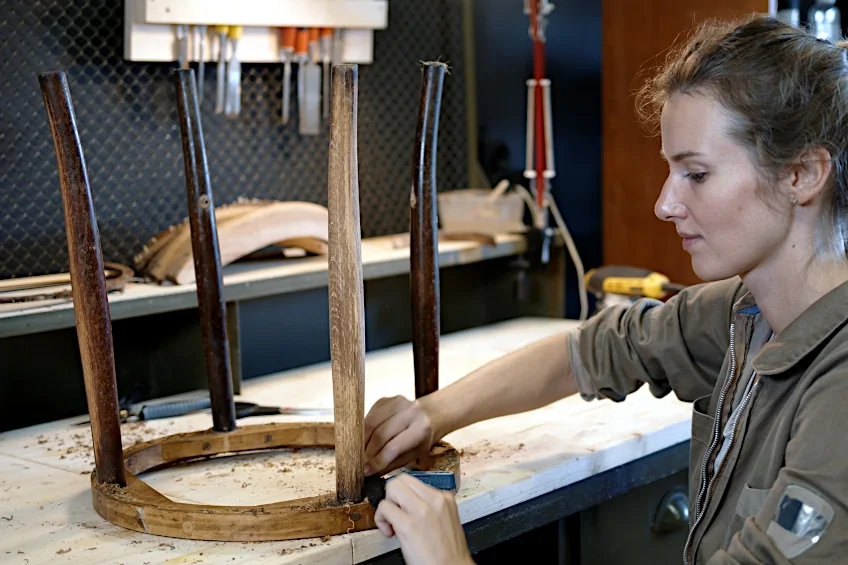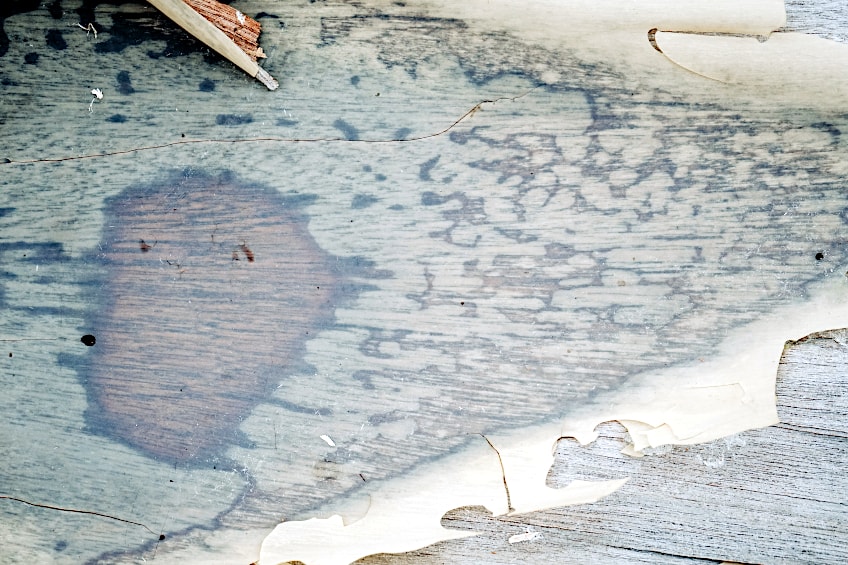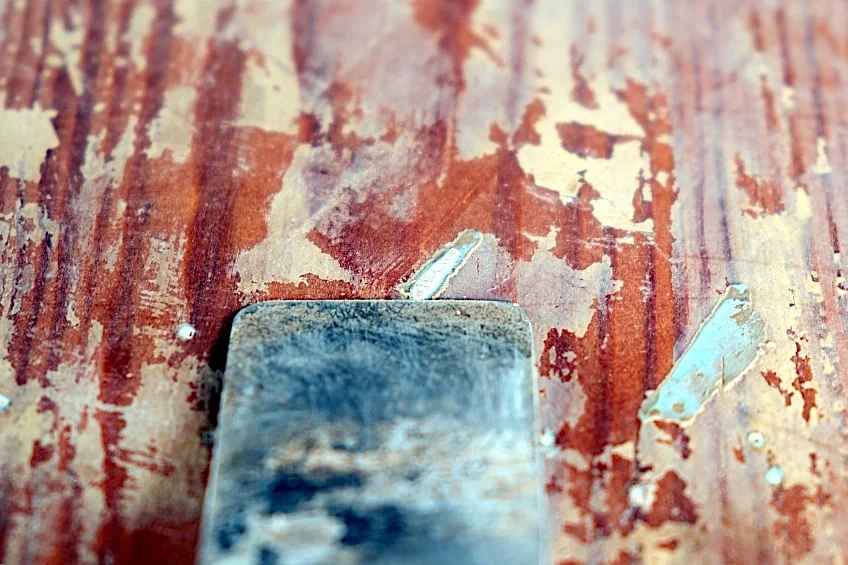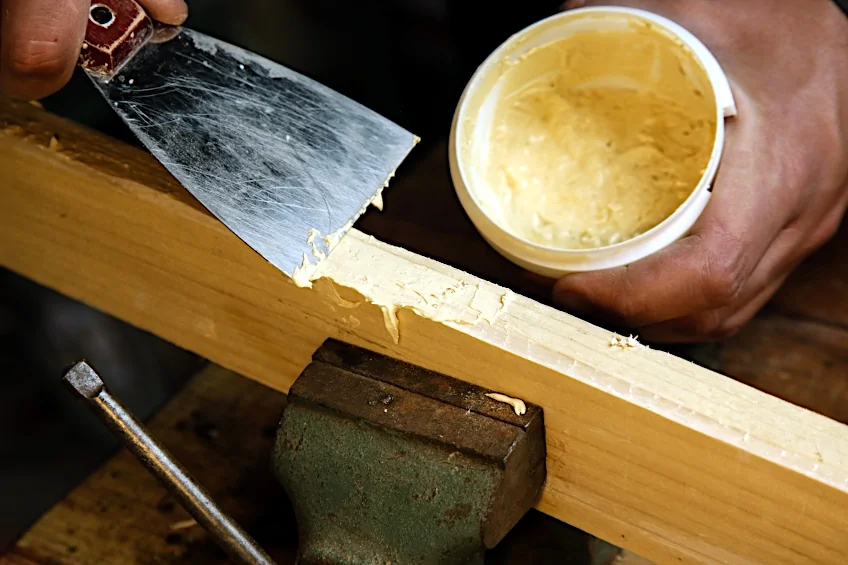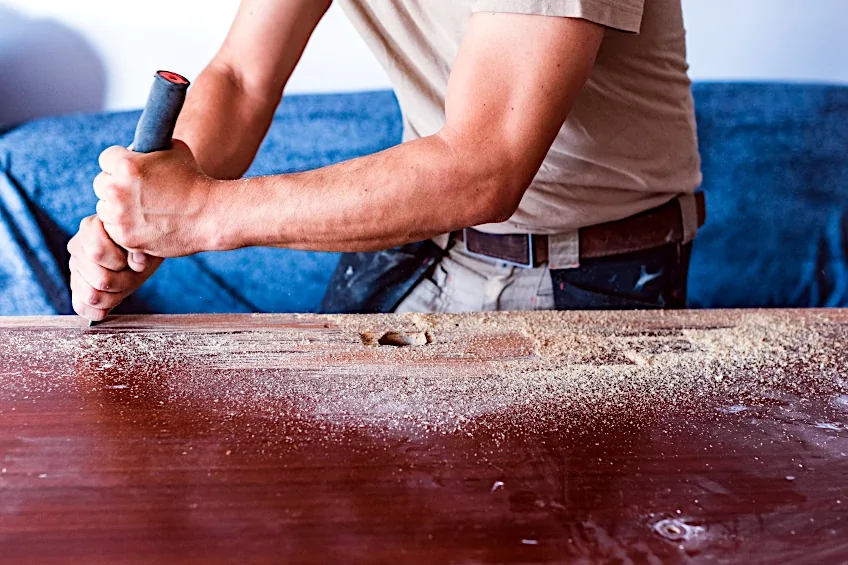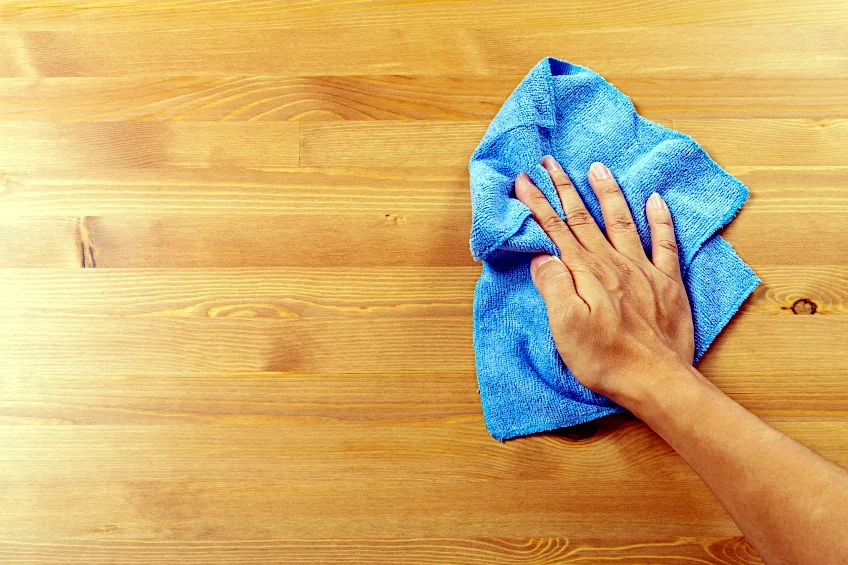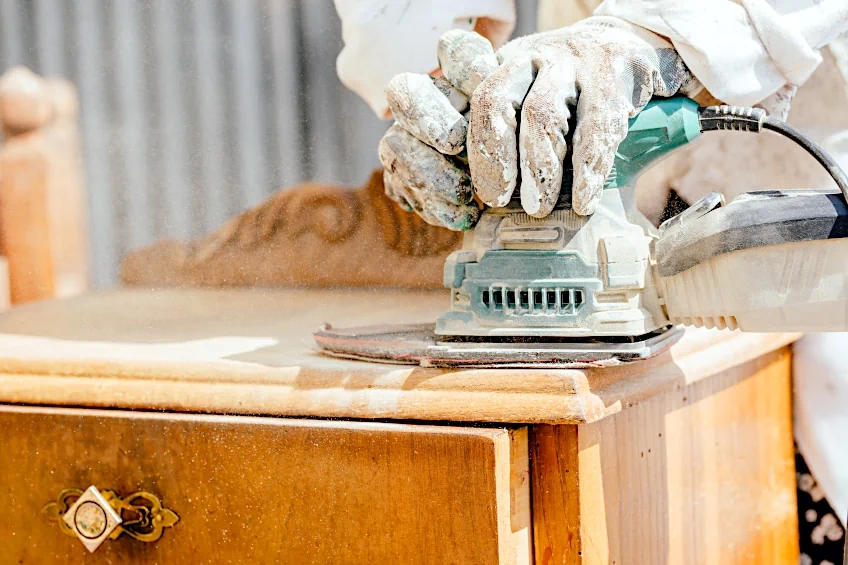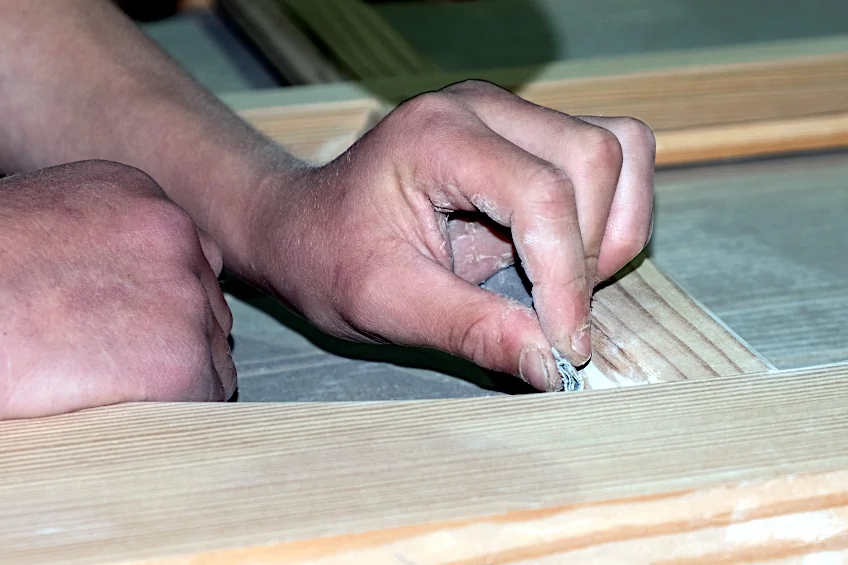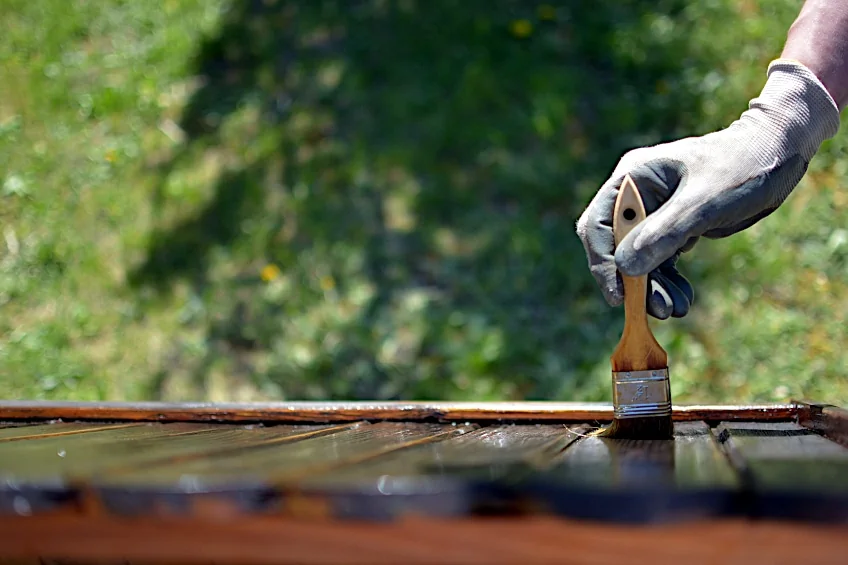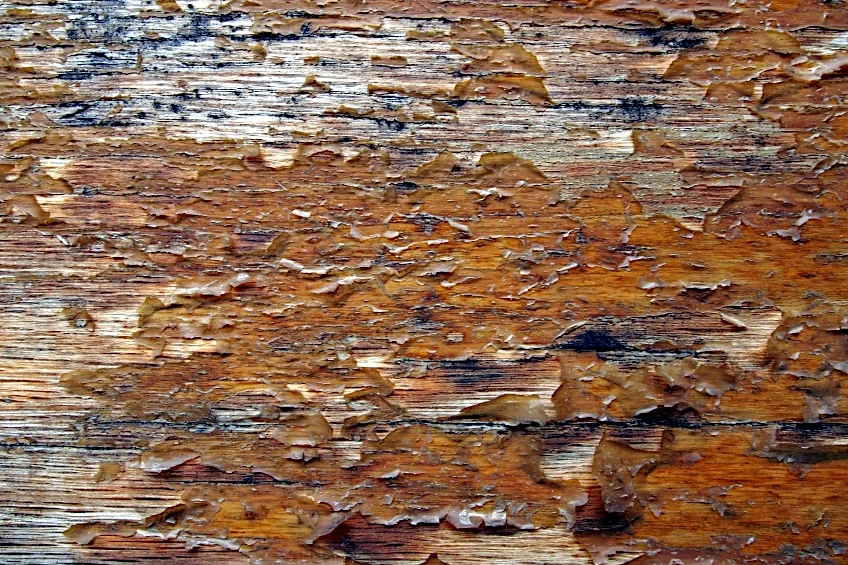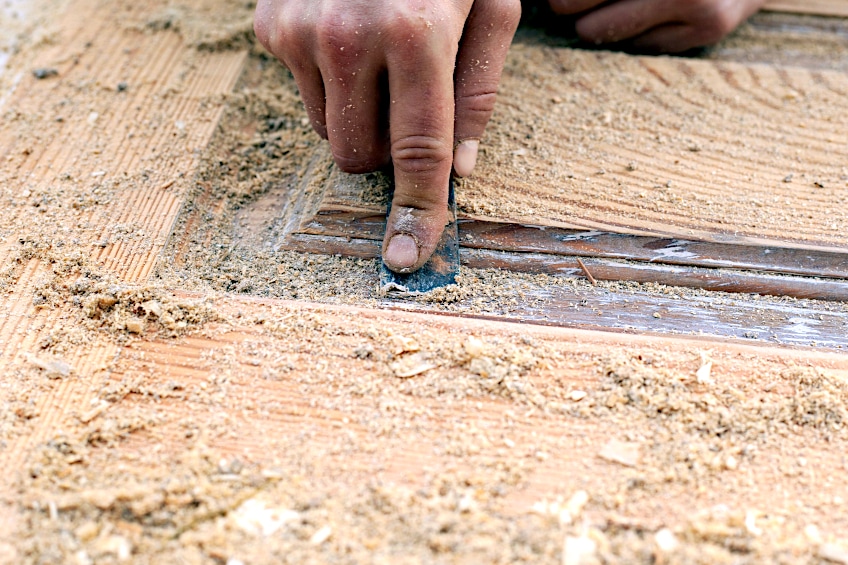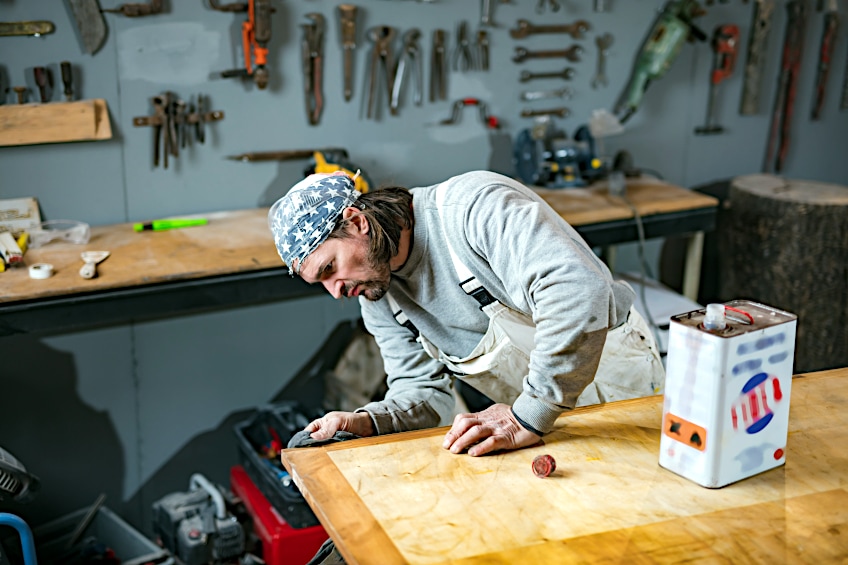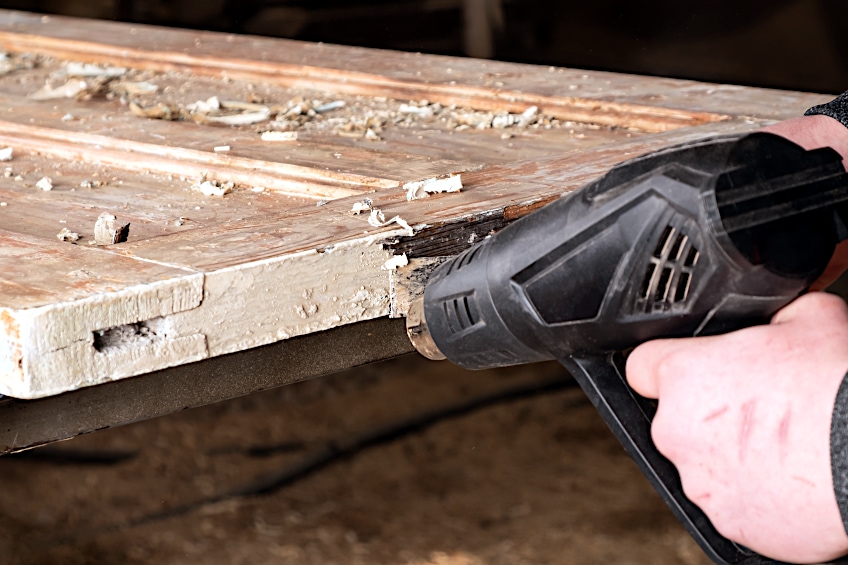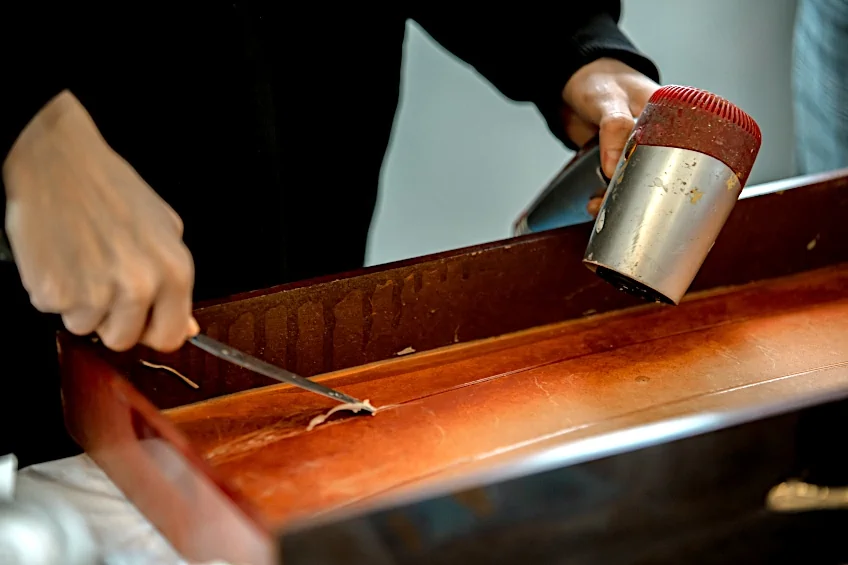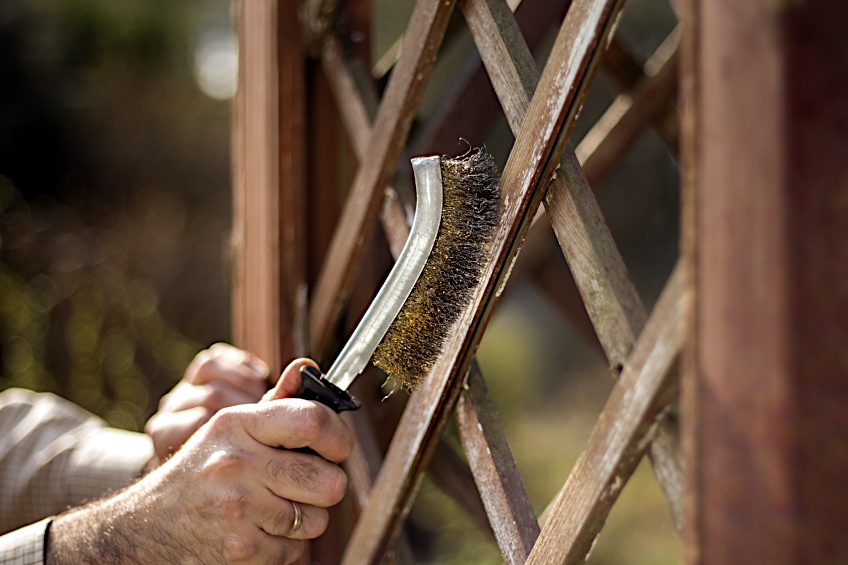How to Remove Lacquer From Wood – Tips for Stripping Varnish Easily
This post may contain affiliate links. We may earn a small commission from purchases made through them, at no additional cost to you. You help to support resin-expert.com
These days, there are loads of ways to go about protecting your surfaces from external forces like wind, rain, or intense heat during those harsh summer months. Some of the most popular ways to protect wooden surfaces in particular are by applying oil-based paints, acrylic paints, epoxy resin coatings, and for those who prefer wood treatments, lacquer or varnish. Varnish has always been an easy and cost-effective way to treat your interior and exterior wood furnishings to protect them from insects and scratches, plus it looks sleek and doesn’t hide the natural grain or texture of your wood. What happens if you need to remove lacquer from a surface though? Let’s have a look at how to go about this and some of the reasons why you might need to remove varnish from your wood workpieces.
Table of Contents
Why Would You Need to Remove Varnish From a Surface?
Why would you need to remove lacquer or varnish from a surface? While varnish is a great wood treatment that can offer your years of protection from external forces there are certain instances in which you might need to have it removed. Let’s have a look at a few of them and some of the reasons why it’s important to remove the varnish before retreating or recoating a wooden surface.
Your Varnished Has Aged
One of the reasons that you might find yourself needing to remove varnish from a surface is because the finish has aged or has been poorly maintained. This reason is pretty common for those who restore antique furniture, especially when the reason the furnishings have been sold is that the owners no longer use them. In this case, the furniture is typically neglected, and selling it takes considerably less effort and cost than finding someone to restore it.
In most cases, you will find that the varnish or lacquer has begun to flake on the surface of the workpiece. This is a clear indication the treatment has started to lift due to the age of the wood or simply not being maintained. Painting over this fading finish or simply applying more varnish will result in a messy, poor-looking result, so it’s best to remove the existing finish before applying a new one.
You’d Like to Apply a New Finish
Things that once looked good often fade into obscurity, so, in the same way, that wearing bell-bottom jeans and exposing your robust chest hair in public don’t reflect the style of our time anymore, things like varnish and lacquer might not fit the aesthetic of your modern home. After all, matt colors and minimalist spaces are all the rage, so the rather old-hat aesthetic of varnish might clash with these style choices.
You might even be inclined to get rid of these furnishings, but we’d like to think that you have a bit more imagination and foresight than that. Besides, why throw away a perfectly good piece of furniture that only needs a little bit of love to look better than anything you’ll find at Ikea these days? Plus think about all the money you’ll save!
You will need to remove the existing varnish before you apply a sleek new finish, and you should probably fill in any holes with some wood putty before you get to styling your soon-to-be neo-retro furniture.
You Have Allergies
This might not be a particularly common reason for removing varnish from a surface but it’s entirely possible. Although varnish and lacquer finishes are great wood treatments that not only provide a great aesthetic element to furniture but also protect them from the elements and damage, they do attract quite a bit of dust.
In addition to attracting dust, they have a nasty characteristic that causes them to retain the odor of nicotine and smoke. That would have been fine in the ’60s and even the ’70s, but these days it could be a problem considering that smoking is a thing of the past for most Americans. Removing varnish and replacing it with epoxy resin or a healthy coat of paint will remove this problem completely.
What Lacquer/Varnish Remover Product Should You Use?
Now that you know how to use these various methods to remove both varnish and lacquer from wooden surfaces, you’re probably wondering what product you should use for your next wood stripping project. This is why we’ve found one of the best gel-based wood strippers on the market for you to consider.
Best Gel-Based Wood Stripper: CITRISTRIP Paint & Varnish Stripping Gel
Gel-based strippers are often viewed as being the best compromise between raw chemical strippers and power sanders. This is because they offer the simplicity and convenience of raw chemical strippers without the addition of caustic chemicals, meaning that you get the best of both worlds. Additionally, you don’t have to deal with the noise or mess associated with power sanders.
One of the best gel-based strippers on the market today is the paint and varnish stripping gel from the Citristrip team. They offer an easy to use, effective gel-based strippers that leave your workspace and workpiece smelling like oranges instead of the overwhelming chemical fumes that conventional strippers leave behind.
Citristrip has created the ideal gel-based stripper that works not only on surface-level coatings of paint and varnish but is capable of penetrating multiple layers of coatings in just under a day. All you need to do is apply this gel stripper to the surface of your choosing and allow it to work for 24 hours before removing it.
One of the best parts about this gel stripper is that you aren’t limited to using it on wood surfaces alone, it can be used on things like metal and masonry too, so you have the versatility and effectiveness of a conventional stripper without any of the nasty fumes! It really does seem that the Citristrip team has thought of everything, and it comes as no surprise that they’ve become a reputable brand among DIY enthusiasts and professional crafters alike.
- A safe and easy to use industrial strength paint/varnish strip gel
- Remains chemically active for 24 hours to remove multiple layers
- Removes latex and oil-based paint, varnish, lacquer, and polyurethane
- Versatile
- Easy to use
- Does not contain caustic chemicals
- Can be used both indoors and outdoors
- Reputable brand
- Can be used on wood, metal, and masonry
- Sold in limited volumes
- Expensive
- Shelf life of odor additives is limited
- May require multiple coats to strip surfaces effectively
How Do You Remove Varnish/Lacquer From Wood?
Wondering how to remove lacquer from wood? There are a few methods you can implement when removing lacquer from wood, but the one you choose will ultimately depend on your budget, what you have available, and of course what kind of time and effort you’re able to dedicate to the job. For your convenience, we’ve prepared a few short tutorials detailing how to remove lacquer from wood using each of these techniques, as well as what you will need and how to prepare your workspace.
Prepare Before You Begin
While there are two primary removal techniques, both of them require some level of preparation for both your workpiece and the surrounding work area. How do you prepare you’re your workpiece? All that you need to do is ensure that any dust, grime, and any other contaminants that might hinder the stripping process have been cleaned from the surface.
Simply wipe down the surface you intend to strip with some soapy water and a clean cloth and allow it to dry completely. Once your workpiece has been prepared, it’s time to prepare your workspace. Use a tarp and some painter’s tape to seal off the parts of your immediate area that the varnish or lacquer you’ll be removing might end up on.
Regardless of whether you will be using a sander of chemicals when removing lacquer from wood, you should ensure that your workplace is well ventilated and that you have constant airflow. Also ensure that you are wearing the appropriate personal protective gear like a face mask, gloves graded for use with chemical strippers, and some eye protection in the form of goggles.
Using a Sander
This is the tried-and-true method when it comes to removing varnish or lacquer from wooden surfaces. All you need is a power sander (or some sanding paper if you enjoy doing things by hand) and some fine grit sanding pads in the 150 grit and 180 grit variety. When sanding varnish or lacquer from a surface it’s best to use an orbital sander instead of a belt sander.
Why? Belt sanders have a tendency to tear up the wooden surfaces they’re used to sand and therefore aren’t suitable for sensitive projects. Using an orbital sander ensure that you sand the surface evenly, working from one end to the other in an oscillating motion, and progressing to finer grit sandpaper with each pass.
While a power sander might work on large surfaces it’s not exactly ideal when dealing with little nooks, so it’s best to use some sanding paper when dealing with corners, hinges, and other hard-to-reach places. After each pass ensure that you remove any debris, dust, and/or wood particles from the surfaces of your workpieces before equipping finer sandpaper and making another pass.
Once the sanding process has been completed, and you’re satisfied with the look of your workpiece, ensure that you wash the surface of your workpiece before adding another surface coating or another wood treatment product. Also, ensure that you’re wearing your face mask and gloves even though this is not a chemical wood tripping process.
Using a Gel or Chemical Stripper
Using a gel or chemical stripper can be a bit tricky, but it’s one of the most effective ways of removing both varnishes and paint from wooden surfaces. Gel strippers use citric acids to eat away at surface coating or wood treatments, leaving behind a clean smooth surface that should be ready for resurfacing or a fresh coat of paint.
How do you use gel strippers? Gel strippers are easy to use but they are less powerful than other chemical-based strippers, therefore you might end up using a lot more of them than you would with other types of chemical strippers. However, because they make use of non-caustic chemicals, they can be used both indoors and outdoors with ease (we recommend working outdoors whenever possible though)
Give your chemical stripper a good shake before you open it up. Next, crack it open and pour some of it out into a metal container, you might notice that it’s quite thick, but this is exactly when you want from a gel stripper. Using your paintbrush, cover the surface of your workpiece (and any other area of the workpiece you wish to strip, with a thin layer of the gel. Once you have your base coat, use your paintbrush to apply another layer of gel stripper and allow it to soak into the surface.
How long should you leave the gel stripper on a surface before removing it? This depends on the brand and the thickness of the gel stripper that has been applied. The thicker the coat, the more effective the stripper and the faster it will work. Once you start seeing bubbles through the stripper on the surface of your workpiece, you can begin removing the gel from the surface.
How do you remove the gel stripper from the surface of your workpiece? Using a plastic scraper to avoid damaging your surface, lift the gel stripper from the surface. If the lacquer/varnish lifts with the gel, repeat this process until all of the gel and varnish have been removed from the surface.
Now that all of your varnish/lacquer has been removed from the surface, use mineral spirits to neutralize the effects of the stripper, and scrub the surface with steel wool to prepare it for resurfacing. This method can be applied when using conventional chemical stripers too, although you won’t have to apply as much of these chemicals to achieve the same result.
Using Directed Heat
Using directed heat as a lacquer remover is a bit of a tough process, but it is effective and serves as a chemical-free way of removing lacquer or varnish from the surface of your workpiece. Directed heat is typically applied through means of a heat gun, these guns use either UV or infrared radiation to lift wood treatments from a workpiece, and they’re pretty effective at it too.
This being said, there are a few drawbacks to using directed heat on a wooden workpiece to remove varnish and lacquer. One of them is that you’re only capable of covering one part of the workpiece at a time, this is because the range and scope of the directed heat projected from the heat gun is rather limited. Although, we should mention that the areas you are able to cover will be lifted pretty easily.
Another drawback of using a heat gun to remove varnish or lacquer is that you need to apply heat to the surface while you are removing old varnish. This means that unless you have another person assisting you, you will have to use one hand to apply heat to the surface and peel the varnish away with your scraper with the other. As you’ve probably guessed, this is really tricky and may not be the best for those who are new to DIY.
How do you use your heat gun? As we mentioned previously it is used to apply heat directly onto the surface of your workpiece which then causes the varnish to raise, at which point it can be removed. All you need to do is keep your heat gun at the manufacturer’s recommended distance from your workpiece and allow the surface to heat up. Next, get your plastic scraper and lift the raised wood treatment from the surface piece by piece.
This can take a while, and you need to act quickly as the surface of your workpiece will start to cool down as soon as there directed heat is removed from the surface. It could also take a few tries, and therefore the best thing to do is target large areas of the workpiece first and pick up the smaller pieces as you go along. Repeat this lacquer remover process as many times as needed. Finish off with a wire brush.
Now that you know why you would need to remove varnish from the surface of a workpiece, how to prepare your workspace for use with chemicals, as well three new effective methods for removing varnish and lacquer from your workpiece it’s time for you to get out there and put your new-found knowledge to the test. Remember to always ensure that your workspace is well-ventilated and that you are wearing the appropriate personal protective gear when working with chemical strippers.
Frequently Asked Questions
How to Strip Varnish off Wood?
Wondering how to strip varnish off wood? There are a number of methods you can use to strip varnish from wood including using a power sander, sanding paper, a chemical stripper, a gel-based stripper, and directed heat.
How to Strip Lacquer From Wood?
Wondering how to strip lacquer from wood? Lacquer and varnish might be different in their overall aesthetic, but they serve the same purpose and are even similar on a chemical level. This being said, the best way to remove lacquer is the same way you would remove varnish which is using a chemical stripper, a gel stripper, directed heat, or sanding paper.
Is Stripping the Same as Sanding?
Stripping and sanding have the same goal, but the way in which they go about achieving it is completely different. While sanding removes both the coating and a layer of wood from the workpiece, the wood stripper uses a chemical formula that attacks the varnish and weakens it so that it can be lifted from the surface of the workpiece without removing any of the base material.


